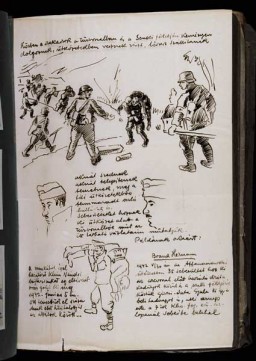You searched for: %EB%B9%84%EC%95%84%EA%B7%B8%EB%9D%BC%ED%80%B5%EB%B0%B0%EC%86%A1%E2%99%A8t789.top%E2%99%A8%EC%A0%95%ED%92%88%EC%95%84%EB%93%9C%EB%A0%88%EB%8B%8C%E2%99%A8%EC%97%AC%EC%84%B1%ED%9D%A5%EB%B6%84%EC%A0%9C%ED%8C%8C%EB%8A%94%EA%B3%B3%E2%99%A8%EB%A0%88%EB%B9%84%ED%8A%B8%EB%9D%BC%EC%B2%98%EB%B0%A9%EC%A0%84%E2%99%A8oiEo
<< Previous | Displaying results 101-150 of 258 for "%EB%B9%84%EC%95%84%EA%B7%B8%EB%9D%BC%ED%80%B5%EB%B0%B0%EC%86%A1%E2%99%A8t789.top%E2%99%A8%EC%A0%95%ED%92%88%EC%95%84%EB%93%9C%EB%A0%88%EB%8B%8C%E2%99%A8%EC%97%AC%EC%84%B1%ED%9D%A5%EB%B6%84%EC%A0%9C%ED%8C%8C%EB%8A%94%EA%B3%B3%E2%99%A8%EB%A0%88%EB%B9%84%ED%8A%B8%EB%9D%BC%EC%B2%98%EB%B0%A9%EC%A0%84%E2%99%A8oiEo" | Next >>
-
Doriane Kurz recalls Bergen-Belsen prisoners hauling wagons of corpses
Oral HistoryDoriane's Jewish family fled to Amsterdam in 1940, a year that also saw the German occupation of the Netherlands. Her father perished after deportation to Auschwitz. After their mother was seized, Doriane and her brother hid with gentiles. The three were reunited at Bergen-Belsen, where they were deported via Westerbork. They were liberated during the camp's 1945 evacuation. Doriane's mother died of cancer soon after Doriane helped her recover from typhus.
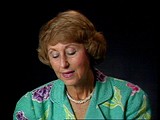
-
Beifeld album page about partisans and lodgings
Artifact(top) "Watercolor entitled 'Partisan hotel and public house', Krassnolipia, Ukraine, until July 31, 1942"; (middle) "Drawing entitled 'The interrogation of partisans captured by our unit'"; (bottom) "Watercolor entitled 'My lodgings in Krassnolipia'" [Photograph #58040]

-
Beifeld album page illustrating military events
Artifact(Top) A map dated August 1942 showing the area of the late summer skirmishes between Hungarian and Soviet forces. It also shows the crucial bend in the Don River near the town of Uryv, where the fateful Soviet breakthrough occurred in January 1943. (Bottom) "Fairy tale nights along the Don River, August 1942." [Photograph #58058]

-
Beifeld album page with watercolors titled "Sports weeks" and "Quiet Don"
Artifact(top) "Watercolor entitled 'Sports weeks in Uryv, September 1942' in which a Russian tank attacks a Hungarian unit in Uryv."; (bottom) "Watercolor entitled 'Quiet Don: a detailed map of the Don River area' featuring images of dead soldiers, horses and spilled blood on a map of the Don River." [Photograph #58060]
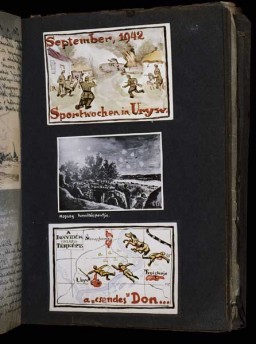
-
Samuel Soltz's visa
DocumentThe back of Samuel Soltz's citizenship papers illustrates the vast array of bureaucratic stamps and visas needed to emigrate from Europe in 1940–41. The stamp in the top left, dated August 21, 1940, represents a visa from the Japanese consul to Lithuania, Chiune Sugihara. Sugihara issued thousands of visas to enable Jews to escape.
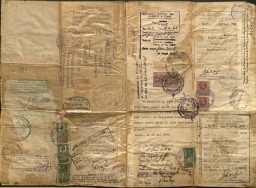
-
The judges at the Doctors Trial
PhotoAmerican judges (top row, seated) during the Doctors Trial, case #1 of the Subsequent Nuremberg Proceedings. Presiding Judge Walter B. Beals is seated second from the left. Nuremberg, Germany, December 9, 1946–August 20, 1947.
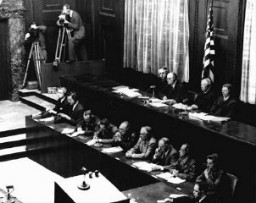
-
Renovating the courtroom to be used for the International Military Tribunal
PhotoRepairs and improvements are made to the courtroom where the International Military Tribunal trial of war criminals would be held. The holes in the walls at the top (when completed) housed radio commentators and public address operators. September 11, 1945.
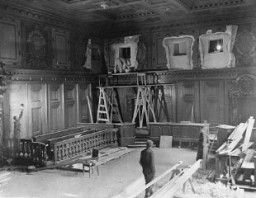
-
Display from "Der ewige Jude," a Nazi antisemitic exhibit
PhotoDisplay from "Der ewige Jude" (The Eternal Jew), a Nazi antisemitic exhibit which claimed that Jews heavily dominated the German performing arts. A phrase at the top of the display states "Shameless Entertainment." Berlin, Germany, November 11, 1938.
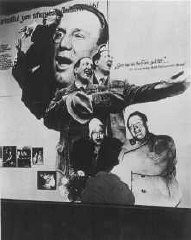
-
Portrait of a preschool class in Copenhagen, Denmark
PhotoPortrait of a preschool class in Copenhagen. Gus Goldenburger (top row, second from left) was one of the few Jewish students in the class. His family moved to Denmark from Czechoslovakia, fearing the rising tide of Nazism. When the Nazis planned to deport Danish Jewry, the Goldenburgers managed to escape to Sweden, where they remained until the end of the war. After the war, the Goldenburgers returned to Copenhagen. Photograph taken in Copenhagen, Denmark, 1938–1939.
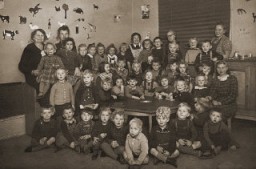
-
Portrait of a boarding school class in which a Jewish boy was hidden
PhotoClass photograph of students at the San Leone Magno Fratelli Maristi boarding school in Rome. Pictured in the top row at the far right is Zigmund Krauthamer, a Jewish child who was being hidden at the school. Rome, Italy, 1943–44.

-
Portrait of Norman Salsitz's family
PhotoIn this 1934 portrait of Norman Salsitz's family, Norman is seated in the front row (at left). In the top row, center, an image of one of Norman's brothers has been pasted into the photograph. This is seen by comparing the size of the brother's face with the others pictured. Pasting in images of family members who could not be present during family portraits was common practice and in some cases the resulting composite images are the only remaining visual records of family groups.

-
Werner Hegemann
ArticleWerner Hegemann was a city planner and author. The Nazis opposed his views of American architecture and German historical figures. His book was burned in 1933.
-
Gartenberg family portrait
PhotoFamily portrait of the Gartenberg family in Drohobycz, Poland. None of those pictured would survive the Holocaust. Photograph taken in 1930. Top row: Julius Gartenberg, Anna Fern, Bernard Klinger, Ona Fern and Izador Gartenberg. Lower row: Marcus Gartenberg, Hinda Gartenberg with her grandaughter Tony Schwartz on her lap, Sol Schwartz, and Ida Fern.

-
Poster for Nazi Party speech on Jewish Bolshevik threat
PhotoPoster for a meeting and speech about the Jewish Bolshevik threat against Germany sponsored by the local Nazi Party of East Hannover. Depicted is a silhouetted caricature of a Jewish man’s head in left profile, with a large, red Star of David beside him. The announcement at the top of the poster reads: "Victory over Bolshevism and plutocracy means being freed from the Jewish parasite!" Created ca. 1937–1940.
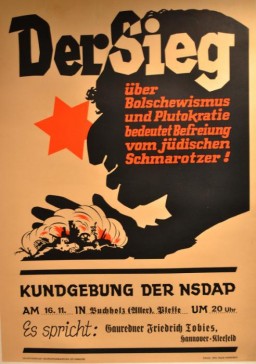
-
Warsaw Ghetto Sealed
Timeline EventNovember 15, 1940. On this date, German authorities ordered the Warsaw ghetto to be sealed.
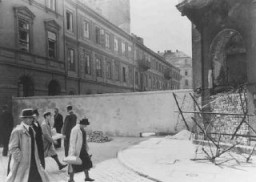
-
Terez Goldberger Kalman
ID CardTerez came from a religious Jewish family. She and her husband, Samuel, raised eight children in Satoraljaujhely, in northeastern Hungary. The Kalmans lived on the outskirts of the city, and in the 1920s they ran a canteen for the soldiers who lived in the nearby barracks. The Kalmans were proud Hungarians; one of their sons had died in World War I. 1933-39: Since Samuel died a few years ago, Terez has been alone here in her house in Satoraljaujhely. Many of her children live nearby, though, so her home…
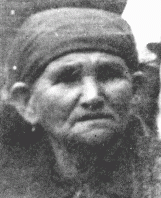
-
Postwar Trials
ArticleEfforts to bring the perpetrators of Nazi-era crimes to justice continue into the 21st century. Learn more about postwar trials and their legacies.

-
Beifeld album page about events of August 28, 1942
Artifact(Top) A drawing dated October 1942 depicting the events of August 28 when Beifeld was wounded near the front lines. His caption reads: "I get wounded and manage to get away from the dangerous bend in the [Don] river]." (Bottom left) Skull of a Soviet soldier with the caption 'Keep Smiling.' (Bottom right) Map entitled 'Dangerous Curve' depicting the bend in the Don River where the Soviet army was threatening to break through. [Photograph # 58061]

-
Eugenio Gentili Tedeschi
ArticleRead the Jewish Partisan Educational Foundation's short biography of Eugenio Gentili Tedeschi.
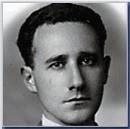
-
Samuel Soltz's Visa
Timeline EventAugust 21, 1940. On this date, Samuel Soltz's visa was stamped by Chiune Sugihara, the Japanese consul to Lithuania.

-
Abraham Bomba describes the Treblinka gas chambers
Oral HistoryExcerpt from Holocaust survivor Abraham Bomba's oral history testimony describing gas chambers at the Treblinka killing center.
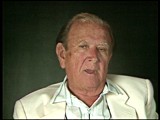
-
Chelmno
ArticleThe Chelmno killing center was the first stationary facility where poison gas was used for mass murder of Jews. Killing operations began there in December 1941.

-
Maria Nemeth
ID CardMaria's parents lived in Szentes, a town in southeastern Hungary, located 30 miles from the city of Szeged. Her mother, Barbara, was born in the neighboring town of Hodmezovasarhely, but moved to Szentes when she married. Maria's father was a dentist. 1933-39: Maria was born in 1932. In 1937 her mother took in a young Austrian woman who lived with the family and helped Maria learn German. 1940-44: In March 1944 German troops occupied Hungary. Members of the Hungarian fascist party, Arrow Cross,…

-
Nazi Rule
ArticleAfter they rose to power in 1933, Hitler and the Nazis eliminated democratic freedoms and took control of all aspects of public life in Germany. Learn more.

-

-
Léon Degrelle
ArticleLéon Degrelle was an extreme right-wing Belgian politician and Nazi collaborator. After the war, he continued to spread pro-Nazi propaganda for decades. Learn more.
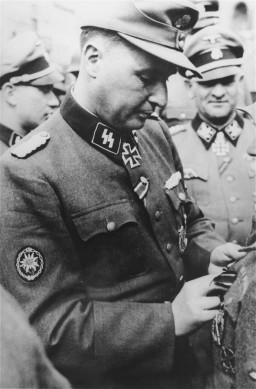
-
David (Dudi) Bergman describes liberation by US Army in mountains near Innsbruck
Oral HistoryThe Germans occupied David's town, previously annexed by Hungary, in 1944. David was deported to Auschwitz and, with his father, transported to Plaszow. David was sent to the Gross-Rosen camp and to Reichenbach. He was then among three of 150 in a cattle car who survived transportation to Dachau. He was liberated after a death march from Innsbruck toward the front line of combat between US and German troops.

-
Elie Wiesel Timeline and World Events: 1928–1951
ArticleSurvivor Elie Wiesel devoted his life to educating the world about the Holocaust. Learn about key events in the world and his life from 1928–1951.

-
Martin Niemöller: Biography
ArticleProtestant pastor Martin Niemöller emerged as an opponent of Adolf Hitler and was imprisoned in camps for 7 years. Learn about the complexities surrounding his beliefs.
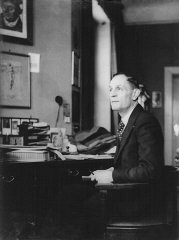
-
International Military Tribunal: The Defendants
ArticleListing of the 24 leading Nazi officials indicted at the International Military Tribunal at Nuremberg. Learn about the defendants and the charges against them.
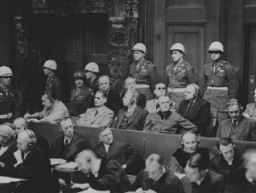
-
Japanese American Relocation
ArticleLearn more about the forcible relocation of some 120,000 people of Japanese descent living in the US to “relocation centers.”

-
Selma Engel diary entry about life in hiding
ArtifactDiaries reveal some of the most intimate, heart-wrenching accounts of the Holocaust. They record in real time the feelings of loss, fear, and, sometimes, hope of those facing extraordinary peril. Selma Wijnberg and Chaim Engel met and fell in love in the Sobibor killing center. After the young couple made a daring escape during the camp uprising and fled into hiding, Selma began a diary to record their experiences. The diary was written in 1943-1944 while Selma was in hiding in German-occupied…

-
Anti-Masonic poster
ArtifactEugenics poster entitled "The relationship between Jews and Freemasons." The text at the top reads: "World politics World revolution." The text at the bottom reads, "Freemasonry is an international organization beholden to Jewry with the political goal of establishing Jewish domination through world-wide revolution." The map, decorated with Masonic symbols (temple, square, and apron), shows where revolutions took place in Europe from the French Revolution in 1789 through the German Revolution in 1919. This…
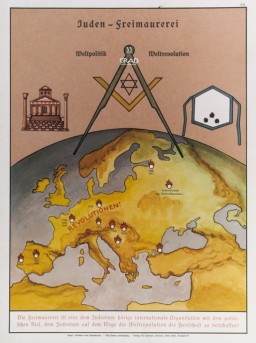
-
Beifeld album page titled "Mementos"
ArtifactCollage entitled: "Mementos from the Russian campaign," which includes a watercolor of Stalin with the caption: 'Russia a meeting place for foreigners 1942-43' (top); a commuter train ticket issued to military personnel who carried the special SAS [Hurry, Immediate, Urgent] draft notice (middle, right); a pseudo travel brochure cover entitled 'Spend your summer vacation in merry Russia' (bottom, left); and the original design for the cover of the labor company's journal entitled 'Hungarian Royal 109/13…
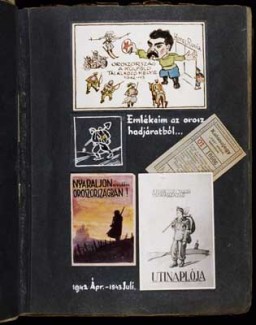
-
Former prisoners of the "little camp" in Buchenwald
PhotoFormer prisoners of the "little camp" in Buchenwald stare out from the wooden bunks in which they slept three to a "bed." Elie Wiesel is pictured in the second row of bunks, seventh from the left, next to the vertical beam. Abraham Hipler is pictured in the second row, fourth from the left. The man on the third bunk from the bottom, third from the left, is Ignacz (Isaac) Berkovicz. [He has also been identified as Abraham Baruch.] Michael Nikolas Gruner, originally from Hungary, is pictured on the bottom…
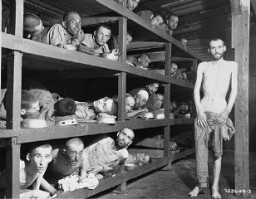
-
Presenting the prosecution's case at the International Military Tribunal
PhotoUS Major Frank B. Wallis (standing center), a member of the trial legal staff, presents the prosecution's case to the International Military Tribunal at Nuremberg. A chart (top left) shows where the defendants (bottom left) fit into the organizational scheme of the Nazi Party. At right are lawyers for the four prosecuting countries. Nuremberg, Germany, November 22, 1945. The trials of leading German officials before the International Military Tribunal are the best known of the postwar war crimes trials.…
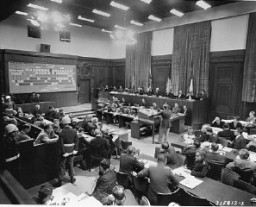
-
Warsaw ghetto uprising, 1943
MapThe city of Warsaw is the capital of Poland. Before World War II, Warsaw was the center of Jewish life and culture in Poland. Warsaw's prewar Jewish population of more than 350,000 constituted about 30 percent of the city's total population. The Warsaw Jewish community was the largest in both Poland and Europe, and was the second largest in the world, behind that of New York City. The Germans occupied Warsaw on September 29, 1939. In October 1940, the Germans ordered the establishment of a ghetto in…

-
Western Desert Campaign: Egypt and Libya
ArticleLearn more about the Western Desert campaign during World War II in Egypt and Libya between 1940-1943.
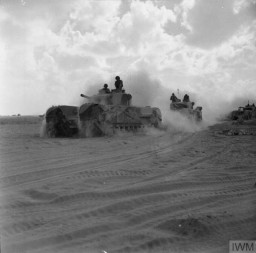
-
Heinrich Himmler: Key Dates
ArticleHeinrich Himmler was the leader of the dreaded SS of the Nazi Party from 1929 until 1945. Learn more about key dates in the life of Heinrich Himmler.

-
Ghettos in Occupied Poland
ArticleDuring World War II, the Nazis established ghettos, which were areas of a city where Jews were forced to live. Learn more about ghettos in occupied Poland.

-
Wannsee Protocol
ArticleThe Wannsee Protocol documents the 1942 Wannsee Conference participants and indicates their agreement to collaborate on a continental scale in the Final Solution.

-
The Nazi Party
ArticleThe National Socialist German Worker’s Party, also known as the Nazi Party, was the far-right racist and antisemitic political party led by Adolf Hitler.

-
Timeline of the German Military and the Nazi Regime
ArticleKey dates illustrating the relationship between Germany’s professional military elite and the Nazi state, and the German military’s role in the Holocaust.
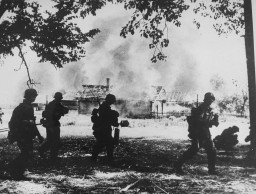
-
Miriam Farcus Ingber describes witnessing a suicide attempt in the Stutthof camp
Oral HistoryMiriam was one of ten children born to a poor, religious Jewish family in Terava, Czechoslovakia. When Hungary took over the area in 1939, almost half the town's Jewish population was deported and sent to labor camps. Later, Miriam and her mother were forced into a ghetto. They were deported to the Auschwitz camp in 1944. After about three months, they were sent to the Stutthof camp. Toward the end of the war, Miriam and her mother were forced on a death march. They and others on the death march were…

-
Abraham Lewent describes hiding during a raid in which his mother and sisters were seized for deportation from Warsaw to Treblinka
Oral HistoryLike other Jews, the Lewents were confined to the Warsaw ghetto. In 1942, as Abraham hid in a crawl space, the Germans seized his mother and sisters in a raid. They perished. He was deployed for forced labor nearby, but escaped to return to his father in the ghetto. In 1943, the two were deported to Majdanek, where Abraham's father died. Abraham later was sent to Skarzysko, Buchenwald, Schlieben, Bisingen, and Dachau. US troops liberated Abraham as the Germans evacuated prisoners.
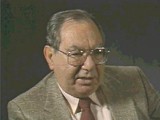
-
Sam Itzkowitz describes the gas chambers in Auschwitz
Oral HistoryThe Germans invaded Poland in September 1939. When Makow was occupied, Sam fled to Soviet territory. He returned to Makow for provisions, but was forced to remain in the ghetto. In 1942, he was deported to Auschwitz. As the Soviet army advanced in 1944, Sam and other prisoners were sent to camps in Germany. The inmates were put on a death march early in 1945. American forces liberated Sam after he escaped during a bombing raid.
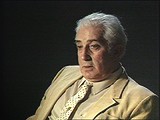
-
1941: Key Dates
ArticleExplore a timeline of key events during 1941 in the history of Nazi Germany, World War II, and the Holocaust.
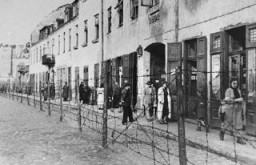
-
Frederick Dermer
ID CardFrederick was born to a Jewish family in the Austrian capital of Vienna. His father died when he was a baby, and he and his mother moved into an apartment with Frederick's widowed grandfather. As a young boy, Frederick attended a Viennese public school. 1933-39: Frederick was a rambunctious child. Once, when his grandfather was baby-sitting, Frederick used a silk lampshade as a "parachute," and jumped from the top of the wardrobe closet. That was the last time Frederick's grandfather would baby-sit.…

-
Killing Centers: An Overview
ArticleThe Nazis established killing centers in German-occupied Europe during WWII. They built these killing centers for the mass murder of human beings.

-
Beifeld album page outlining the labor service's roles in the war effort
ArtifactA page of drawings illustrating the contribution of Jewish Labor Servicemen to the war effort. At the top: "The different platoons work hard at the battle front and in the no man's land [between the armies]. They actively participate in the fighting. They carry ammunition to the Hungarian soldiers." In the middle: "They defuse land mines. They bury the dead, including those that had been left unburied from the winter campaign. They carry soldiers wounded on the front lines to safety." At the bottom: "For…
